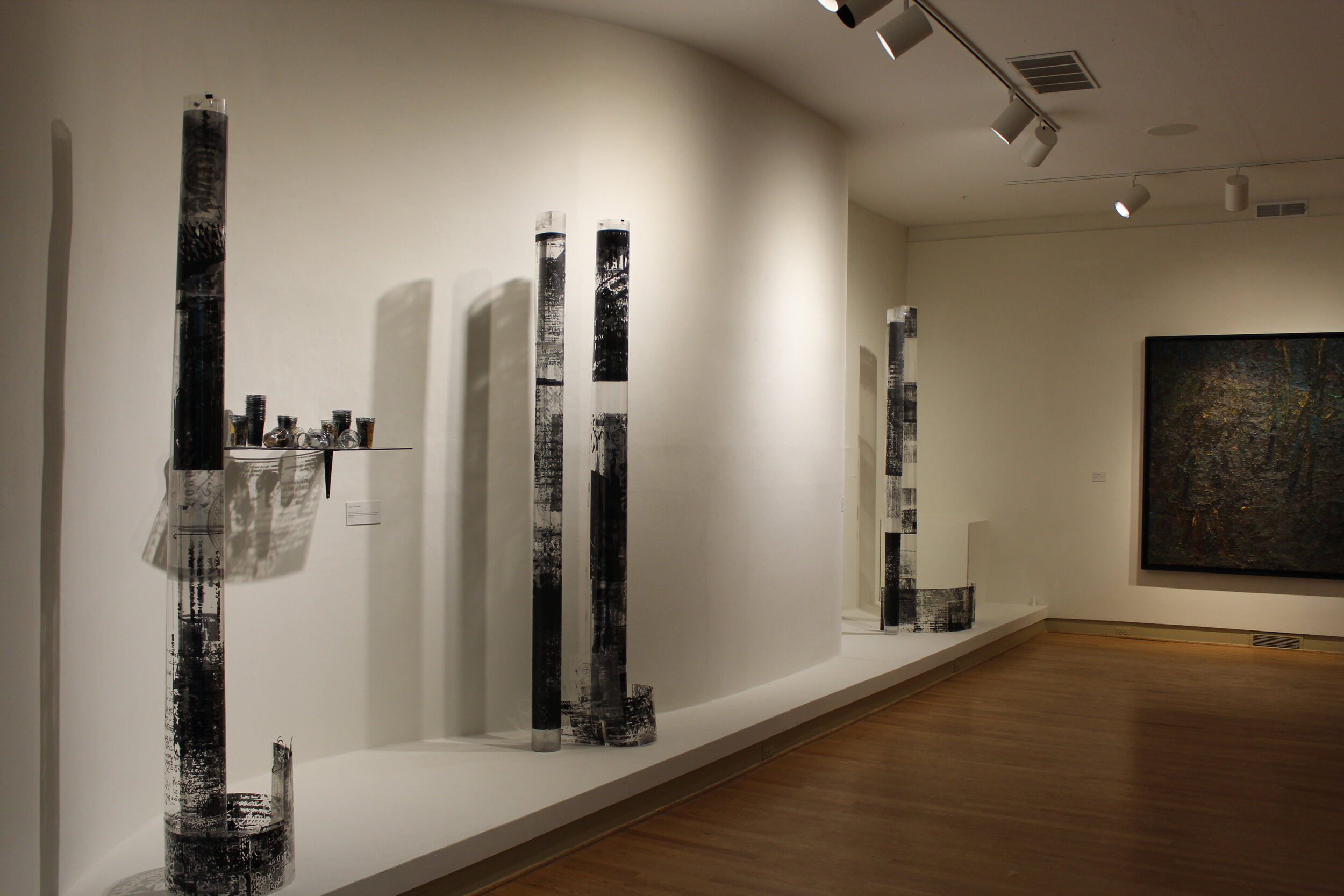Naturally: Judith Roston Freilich and Lilach Schrag
CHICAGO, IL—- The Ukrainian Institute of Modern Art is delighted to announce Naturally opening on February 5th, 2022 featuring works by Judith Roston Freilich and Lilach Schrag who have come together for their first joint exhibition.
Fascinated by forces of nature and mind, Judith Roston Freilich and Lilach Schrag examine, each in her own way, essence, energy, and evolution. Judith Roston Freilich’s works on paper and textiles were inspired by her aspirations to integrate the arts into everyday life. Throughout her life, Roston Freilich’s home and works have always centered around the cycles of life and the natural offerings of every season. The vital consequences of climate change and the COVID-19 virus have impacted the artist’s work, and aspires that her artistic creation will act as a springboard for awareness towards scientific ways that aim to heal our planet. With images and materials drawn from both her natural and domestic environment, Lilach Schrag uses organic found objects, fabric, paper, enamel, and acrylic paints, charcoal, graphite, threads, pins, and staples in making large-scale energy-packed paintings with epic figures and creatures transforming into each other and into vegetation. Layered, camouflaged, and not immediately identified, they convey a sense of awe, urgency, determination, and vulnerability. The natural materials rich with texture, meaning, and previous life sends Schrag on a fantastic flight, and at the same time keeping her grounded in this physical world.
Artist Biographies:
Judith Roston Freilich earned a BFA and merit-based scholarship award from Washington University in St. Louis. While working at Landfall Press as a printing assistant and curator, she earned a graduate degree in printmaking with Misch Kohn from the Illinois Institute of Technology. She has exhibited at the Art Institute of Chicago. Her work has been selected for the Rockford Midwestern Biennial at the Rockford Art Museum, the Evanston and Vicinity Biennial at the Evanston Art Center, the Bradley International Print and Drawing Show. Her work is in multiple permanent collections including the Library of Congress.
Lilach Schrag graduated from Hamidrasha Art School in Israel, and holds a Master of Arts from Spertus Institute, Chicago. Her work has been featured in publications such as the Chicago Tribune, and The Jerusalem Post, and she has exhibited in solo and group shows in the United States and in Israel including: Spertus Institute, Governors State University, 33 Contemporary Gallery in Chicago as well as the Janco Dada Museum and the Jerusalem Biennale in Israel.
On display in the West Gallery February 5th-April 3rd, 2022
Kandinsky: The Rediscovered Bauhaus Sketchbook
CHICAGO, IL—Chicago - The Ukrainian Institute of Modern Art is pleased to announce Kandinsky: The Rediscovered Bauhaus Sketchbook, an exhibition featuring 15 pages of a newly authenticated sketchbook used by the artist Wassily Kandinsky in 1922, when he was teaching at the Bauhaus in Weimar, Germany. On view from October 16 through November 7, 2021, the exhibition will make available to the public the only loose pages from the 43-page sketchbook possible, without damage to the sketchbook itself. Kandinsky: The Rediscovered Bauhaus Sketchbook is presented in partnership with the National Museum “Kyiv Art Gallery” in Kyiv, Ukraine and is made possible through the generosity of the Khodorkovsky Family, the sketchbook’s owner.
Wassily Kandinsky (Moscow, 1866 - Neuilly-sur-Seine, France, 1944) is one of the most noted artists of the 20th century. An artist, art theorist and educator, he is often credited as a pioneer of abstraction. Kandinsky spent his youth in Odessa, Ukraine, graduating from the Grekov Odessa Art School. He then attended the University of Moscow, where he studied law and economics, from 1886-1892. He declined a teaching position in his field in Dorpat, today Tartu, Estonia in 1896 and moved to Munich to study art, first with Anton Azbe, followed by Franz von Stuck. While in Munich, Kandinsky began to move towards abstraction. He is widely known for his work with German artist Franz Marc (1880-1916) for the publication of the Blue Rider Almanach and its related exhibitions. His 1911 treatise Concerning the Spiritual in Art continues to be an important resource explaining the inner life of the artist and its relationship to non-objective forms. His forced return to Russia at the onset of World War I in 1914 was short-lived. He returned to Germany after the war and assumed a teaching position with the Bauhaus, where he remained until its closure by the Nazi government in 1933. Kandinsky then left for France, where he remained until his death. The sketchbook’s rediscovery corrects previous issues concerning the absence of known personal sketchbooks by the artist from 1922-1927. Provenance history suggests the existence of additional sketchbooks, as yet to be found.
For further inquiries, a book (hardback) documenting the authentication process will be available for purchase for $35 with an introduction by Nuno Viana. In addition to reproductions of all the sketches themselves, expert reports by Lisa Florman, Reinhold Heller, Dmytro Horbachev, and Maria Valyaeva, are reprinted. A technical examination and analysis report from the Conservation Department at the Metropolitan Museum of Art (NYC.) is also included.
The Horizon is a Circle: Ricardo Manuel Díaz and Margarita Fainshtein
The Ukrainian Institute of Modern Art is honored to present paintings by Chicago based artist Ricardo Manuel Díaz and printed works by Nova Scotian artist Margarita Fainshtein in The Horizon is a Circle, a two person exhibition that contemplates displacement, a sense of place, and what home means across geographic borders and cultures. Díaz, a longtime Cuban political refugee, reflects upon the nuances and challenges associated with coping with family left behind, adjusting to a new way of life, economic distress, and degrees of acceptance. Fainshtein, thrice transplanted from Ukraine, to Israel, to Nova Scotia invites visitors to assume active roles as an 'observer' or 'participant', paralleling conditions of the seeming acceptance of official political citizenship and the reality of cultural discrimination. How welcome can one feel in a country tainted with disdain for those unlike the majority? How do deep-seated attitudes embedded in history continue intergenerationally and affect family? Both artists bring awareness to these and other issues as they explore what it means to bridge past and present across cultures - gathering information about how one exists in the world, what gets internalized with time, and what gets fixed in one's memory. The Horizon is a Circle will be on view through August 22, 2021 and a catalogue will be published in conjunction with the exhibition.

















